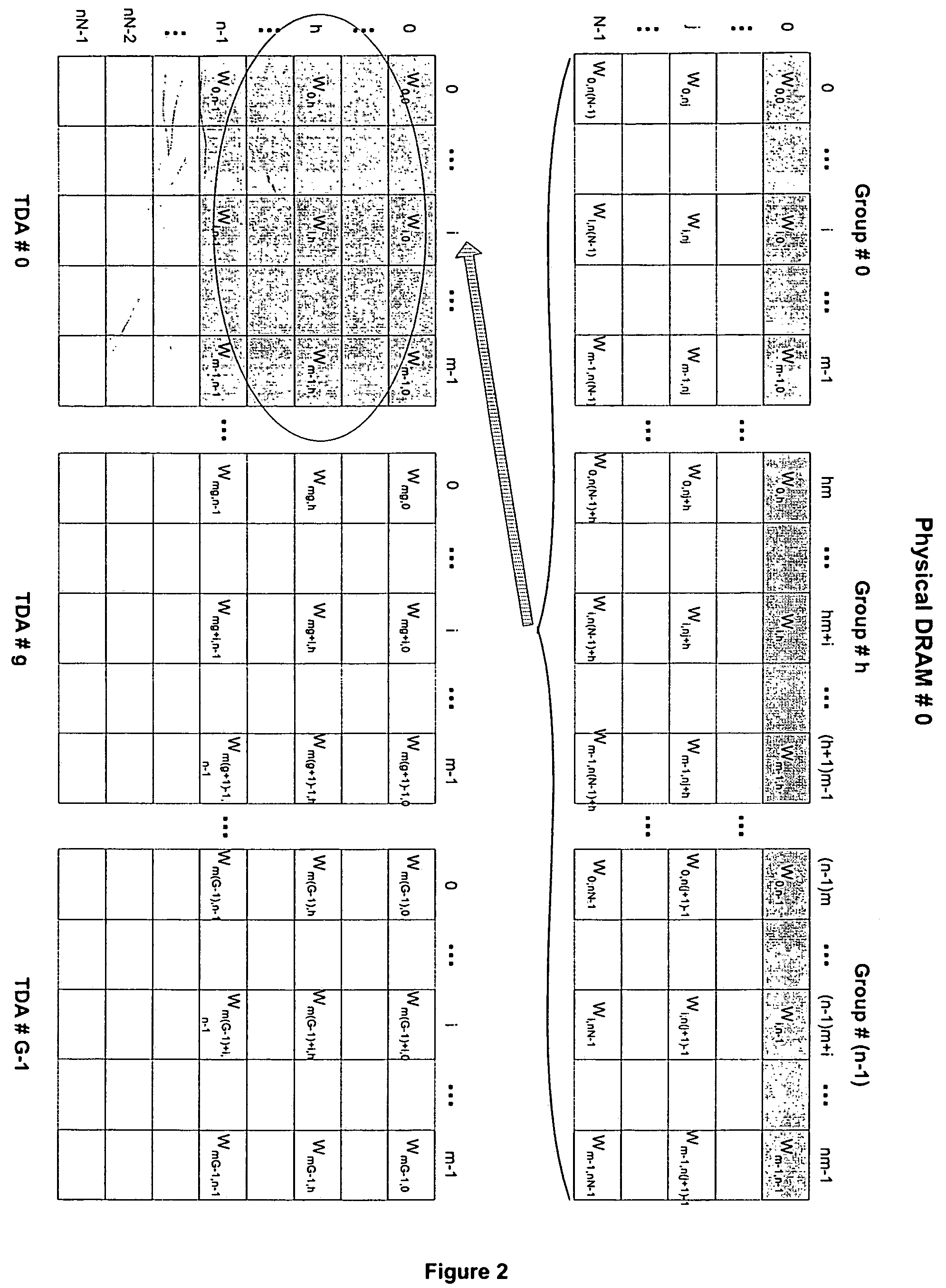Multi-dimensional associative search engine having an external memory
a search engine and external memory technology, applied in the field of associative search engines, can solve the problems of limiting the use of external drams to low lookup rates, requiring a refresh interval, and much slower, and achieve the effect of high storage capacity
- Summary
- Abstract
- Description
- Claims
- Application Information
AI Technical Summary
Benefits of technology
Problems solved by technology
Method used
Image
Examples
— example 1
B-Tree Search Procedure—Example 1
[0210]The example assumes that the G=3 DRAMs being used allow simultaneous access to m=1 word in each cycle, and that Step 1 of the ternary-binary search, performed in the FC-Register, points to the first extended row of the 3 TDAs.
[0211]Reference is made to FIG. 19, which illustrates the search process for the specific storage arrangement shown in FIG. 18. Step 2 of the search procedure starts with a 1-step ternary search, where the searched key is compared with W3,0 and W7,0. Depending on this comparison result, the searched key is compared in a 2-step binary search, first with W1,0, W5,0 or W9,0, and finally with W0,0, W2,0, W4,0, W6,0, W8,0 or W10,0, depending on the previous comparison result. The search procedure is completed within a maximum number of 3 steps, requiring 3 read cycles. The search result points to a specific key entry in TDA # g (0≦g≦2). The row and column locations of this specific key entry in DRAM # g are given by row and col...
— example 2
Pipelined B-Tree Search Procedure—Example 2
[0235]The example of a B-tree search presented herein (see FIG. 26) assumes that the G=4 DRAMs have 44 words per extended row and allow simultaneous access to m=2 words in each cycle, and that Step 1 of the binary search, performed in the FC-Register, points to the first extended row (# 0) of the 4 TDAs.
[0236]FIG. 26 shows the logical arrangement in 4 TDAs of the 44 words per extended row and a B-tree search procedure consisting of three stages. In this example, the words compared in the first and third search stages are arranged in common TDAs (the first three) and those used in the second stage are arranged in a separate (last) TDA. This arrangement is one of many alternatives for a B-tree search.
[0237]Step 2 of the search procedure starts with a 1-stage ternary search, in which the searched key is compared with the 4 words arranged in 2 pairs (W8,0, W17,0) and (W26,0, W35,0) located about 1 / 5, 2 / 5, 3 / 5 and 4 / 5, respectively, of the first...
PUM
 Login to View More
Login to View More Abstract
Description
Claims
Application Information
 Login to View More
Login to View More - R&D
- Intellectual Property
- Life Sciences
- Materials
- Tech Scout
- Unparalleled Data Quality
- Higher Quality Content
- 60% Fewer Hallucinations
Browse by: Latest US Patents, China's latest patents, Technical Efficacy Thesaurus, Application Domain, Technology Topic, Popular Technical Reports.
© 2025 PatSnap. All rights reserved.Legal|Privacy policy|Modern Slavery Act Transparency Statement|Sitemap|About US| Contact US: help@patsnap.com



